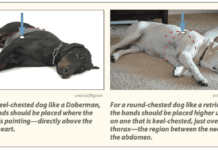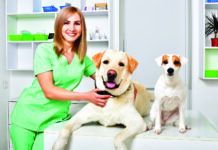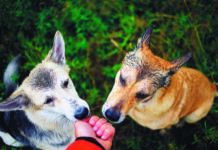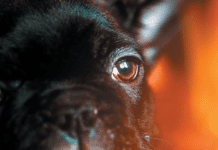Which Dogs Should Have Regular Breast Exams?
If your dog was spayed before she had even a single heat, she has virtually no chance of ending up with mammary (breast) cancer. But her risk for that disease rises substantially if her spaying occurred after the first heat. And if she wasn’t spayed till after her third or fourth heat, any potential cancer-sparing benefit may have been lost completely.
Bringing in the Expertise of a Veterinary Cardiologist Without Actually Having to Bring in...
AI—Artificial Intelligence—is often thought of as a kind of creepy, subversive use of information that does everything from allow students to cheat on their term papers to inadvertently promulgate falsehoods. But while it certainly can be misused, it also has amazing potential to do good, including in the care of dogs. It may even be able to help veterinarians pinpoint with better accuracy whether a dog has a heart murmur that would benefit from medication, an echocardiogram that would allow for further evaluation, or a referral to a board-certified veterinary cardiologist. In that way, it can both save people with dogs from spending money unnecessarily if the murmur is in fact not a significant health issue as well as better insure that a dog will receive prompt treatment if he does have a murmur that calls for further testing and/or a consult with a specialist.
Avoid Canine Frost-bite and Other Cold Weather Hazards
It’s a common belief that dogs are more resistant to cold weather than people because of their fur, but that’s not true. Granted, longer-haired and thick-coated dog breeds like huskies and other dogs bred for colder climates are more tolerant of cold weather than dogs in general. But even dogs that don’t complain or don’t seem to mind are susceptible to frostbite and hypothermia. When the weather is extremely cold, shorten your outdoor time with your pet.
If Only My Dog Would Die in His Sleep
For our dogs as well as our human loved ones, we wish for health right up until the moment of death. Part of the reason, says Tufts Cummings School veterinary social worker Eric Richman, MSW, is that “some people tend to be uncomfortable with conversations about death and dying. If a dog dies peacefully in his sleep, they may see it as a way to avoid those difficult discussions.”
Your Dog Doesn’t Have to Be White to Have Little White Shaker Syndrome
Your dog has always been perfectly fine but now has begun experiencing full-body tremors, or maybe tremors localized to one region, such as the head. Depending on the dog, the tremors range from mild to so severe that they are debilitating and perhaps include loss of balance. In some cases, they are accompanied by nystagmus—back-and-forth or circular eyeball movement that is clearly not in the dog’s control. The tremors tend to increase with exercise, stress, or excitement. What’s going on?
Simple Ways to Know Your Dog’s in Pain
Let’s say “you have a 5-year-old female mixed breed dog who has been happy and healthy since she was a puppy. She has always been very friendly and loved to be petted. Recently she has wanted less interaction with her family and occasionally gets a little snappy when she no longer wants to be petted.”
How bad are the bad foods?
Q: As someone who has had dogs for many years, I know the list of foods that are bad for them: chocolate, onions, garlic, grapes, and raisins. But just how bad are they? Can a dog really get sick eating even just a small amount of these items?
Updated Guidelines for Performing CPR on Dogs Hoped to Save More Canine Lives
The survival rate for dogs in the hospital who stop breathing and undergo CPR (cardiopulmonary resuscitation) is low. Fewer than 6 percent make it out alive. In an effort to improve the odds, researchers participating in an initiative known as RECOVER— Reassessment Campaign on Veterinary Resuscitation—combed through almost 1,400 studies to ascertain which methods work best.
When Your Dog Won’t Swallow a Pill
Most dogs are easy enough to get a pill into, even on a regular basis if need be. You simply make a “meatball” out of some wet dog food or something else soft, like deli meat or cheese, and your dog will end up reminding you about his medication after a while. You just have to make sure with the veterinarian that whatever food you use to wrap the pill doesn’t contain ingredients that are bad for the condition you’re treating.
4 Tips to Make Vet Visits Less Intimidating
What It Means If Your Dog’s Nose is Warm and Dry
A lot of people believe that a cool, moist nose is a sign of good health in a dog and a warm dry one means something’s wrong. But that’s not the case.
Can the other eye be saved?
Q: My son realized that his 8-year-old golden retriever lost vision in one of her eyes. She was diagnosed with something the doctor called pigmentary uveitis. The veterinary ophthalmologist indicated that the pressure in her eye was very high, causing pain, and recommended removing the eye. My son followed the recommendation, but what can be done to prevent this wonderful dog from getting pigmentary uveitis in her other eye?
















